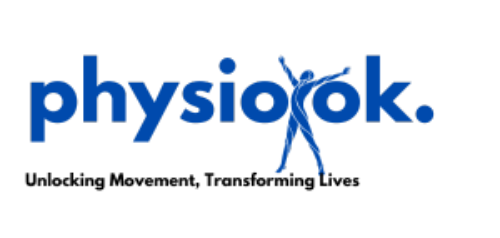Balance and coordination are foundational elements in physiotherapy, critical to injury prevention, rehabilitation, and enhancing mobility and function. Physiotherapists use various techniques to improve these skills, enabling patients to regain control over their body movements. Let’s explore how balance and coordination work, and the scientific principles behind them.
1. Understanding Balance and Coordination
- Balance is the body’s ability to maintain its center of gravity over its base of support. It requires stability in both static (still) and dynamic (moving) conditions.
- Coordination is the smooth, controlled, and precise movement between muscles and joints. It’s crucial for activities that require complex motion, such as walking, reaching, or climbing.
Balance and coordination rely on the intricate interaction between the musculoskeletal and nervous systems, along with sensory input from the eyes, inner ear, and proprioceptors.
2. Role of the Musculoskeletal System
- Muscles and Joints: Muscles contract to stabilize joints and counteract forces that could disturb balance. Strong, flexible muscles are essential for stabilizing joints during coordinated movements.
- Tendons and Ligaments: These structures support joints and restrict excessive movement that could compromise balance. They are particularly active in the lower limbs to maintain stability and alignment in standing or walking.
Physiotherapists often prescribe strengthening exercises to improve muscle tone and joint stability, which are essential for maintaining balance.
3. The Vestibular System and Balance
- The vestibular system, located in the inner ear, senses changes in head position and motion. It sends signals to the brain that adjust body posture to maintain balance.
- Vestibular Rehabilitation Therapy (VRT) is often used for patients with dizziness, vertigo, or balance disorders. It involves specific exercises that help retrain the brain to process signals from the vestibular system, reducing symptoms and improving stability.
4. The Role of Proprioception
- Proprioceptors are sensory receptors located in muscles, tendons, and joints. They inform the brain about body position and movement, which is crucial for coordination.
- For example, if you step on an uneven surface, proprioceptors signal the brain, enabling a quick muscular response to prevent a fall.
In physiotherapy, balance boards, stability balls, and other tools are often used to engage proprioceptors and improve body awareness and reaction time.
5. The Nervous System’s Coordination Control
- Central Nervous System (CNS): The CNS (brain and spinal cord) processes sensory input and sends signals to the muscles to produce smooth, coordinated movements.
- Cerebellum: Often called the “coordination center,” the cerebellum adjusts movement precision, timing, and force. It plays a critical role in fine-tuning motor actions.
Physiotherapy can include exercises that activate the cerebellum through repetitive and targeted movements, helping improve coordination.
6. The Influence of Visual Feedback
- Visual Input: The eyes provide information about the body’s position relative to its surroundings, helping maintain stability. This visual feedback becomes even more important when other systems (vestibular or proprioceptive) are compromised.
- Physiotherapists may use vision-based exercises, such as focusing on a fixed point during balance activities, to enhance stability.
7. Neuroplasticity in Balance and Coordination Training
- Neuroplasticity is the brain’s ability to reorganize and form new neural connections. This is essential in rehabilitation, as the brain can adapt and compensate for damaged areas.
- Physiotherapists leverage neuroplasticity by designing exercises that repetitively challenge balance and coordination, allowing patients to regain or improve these skills over time.
Common Physiotherapy Techniques to Enhance Balance and Coordination
- Balance Exercises: Activities like standing on one leg, heel-to-toe walking, and using balance boards challenge the body’s ability to maintain stability.
- Strength and Flexibility Training: Strong and flexible muscles provide a stable foundation, allowing joints to move smoothly. Physiotherapists might prescribe exercises targeting core strength to improve balance and alignment.
- Proprioceptive Training: Using tools like stability balls, wobble boards, and foam pads enhances body awareness. These exercises train proprioceptors to improve reaction time and body control.
- Vestibular Rehabilitation Exercises: Head and eye movement exercises can help recondition the vestibular system, making it easier for patients to maintain balance and reduce dizziness.
Benefits of Improving Balance and Coordination
- Reduced Fall Risk: Improved stability can decrease the likelihood of falls, especially in older adults and those recovering from injury.
- Enhanced Functional Independence: Patients can regain confidence in activities of daily living, such as walking, bending, and reaching.
- Improved Sports Performance: For athletes, better coordination can enhance speed, precision, and agility.
- Lower Injury Risk: By improving balance and coordination, patients are less likely to experience repetitive strain injuries or joint instability.
Conclusion
Balance and coordination training in physiotherapy offers tremendous benefits, supporting overall mobility, injury prevention, and a more active lifestyle. Through targeted exercises, strengthening routines, and proprioceptive challenges, physiotherapists harness the body’s intricate systems to help patients move with confidence and stability.
